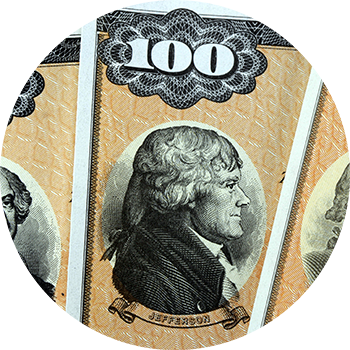Comparing EE and I bonds
We currently offer 2 types of savings bonds: EE bonds and I bonds.
Use this table to see the features of both side by side.
| EE bonds | I bonds | |
|---|---|---|
|
Current interest rates
(for bonds you buy November 1, 2025 to April 30, 2026 ) |
2.50%
(stays same at least 20 years) |
4.03%
(stays same for 6 months) |
| How do the bonds earn interest? | EE bonds you buy now have a fixed interest rate that you know when you buy the bond.
That rate remains the same for at least the first 20 years. It may change after that for the last 10 of its 30 years. We guarantee that the value of your new EE bond at 20 years will be double what you paid for it. (If you have an EE bond from before May 2005, it may be earning interest at a variable rate. See more at EE bonds.) |
I bonds earn a rate that can change every 6 months. The rate is a combination of:
We guarantee that the interest rate of an I bond will never fall below zero. |
| How often do the bonds for sale today earn interest? | Both EE and I savings bonds earn interest monthly. Interest is compounded semiannually, meaning that every 6 months we apply the bond’s interest rate to a new principal value. The new principal is the sum of the prior principal and the interest earned in the previous 6 months.
Thus, your bond's value grows both because it earns interest and because the principal value gets bigger. EE and I bonds earn interest until the first of these events: You cash in the bond or the bond matures – reaches the end of its 30-year term. (If you cash in the bond before 5 years, you lose 3 months interest.) If you have an electronic bond, you can see what it is worth in your TreasuryDirect account. To see what your paper bond is worth, use our Savings Bond Calculator. |
|
| Must I pay tax on what the bond earns? | The tax situation is the same for both EE and I bonds.
Federal income tax: Yes State and local income tax: No Federal estate, gift, and excise taxes; state estate or inheritance taxes: Yes For federal income tax, you choose whether to report earnings each year or wait to report all the earnings when the bond finishes earning interest (or when you cash it if you cash it before the end of its 30 year life). If you use the money for qualified higher education expenses, you may not have to pay tax on the earnings. See more in |
|
| Are the bonds electronic or on paper? | New EE bonds are electronic only.
You may own paper EE bonds issued before 2012. |
As of January 1, 2025, all new I bonds are electronic.
You may own paper I bonds issued before 2012 that you bought at a bank or through payroll savings. |
| How much does an electronic bond cost? | You can buy an electronic EE or I bond for any amount from $25 to $10,000. You can specify the amount to the penny. For example, you could buy an electronic bond for $50.23. | |
| Where do I keep electronic bonds? | In our online program, TreasuryDirect.
|
|
| What's the most I can spend on EE or I bonds? | In any one calendar year for one Social Security Number, you may buy up to:
|
|
| How soon can I cash in the bond? | After 12 months.
However, if you cash in the bond in less than 5 years, you lose the last 3 months of interest. For example, if you cash in the bond after 18 months, you get the first 15 months of interest. |
|
See also:
Financial Institutions:
Help Customers Cash In Their Savings Bonds
View special instructions on how to cash in paper Savings Bonds that customers may bring into your bank.

